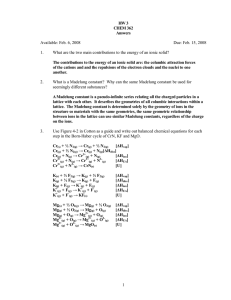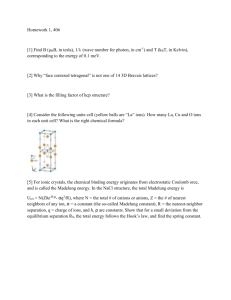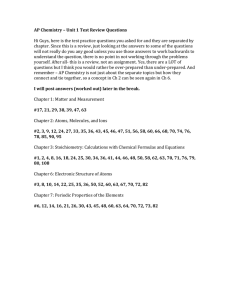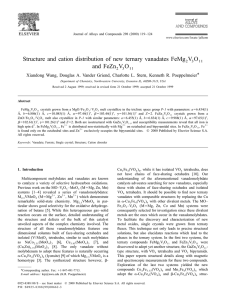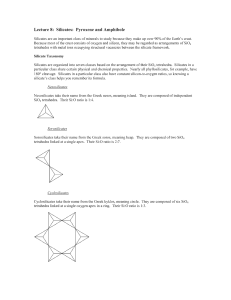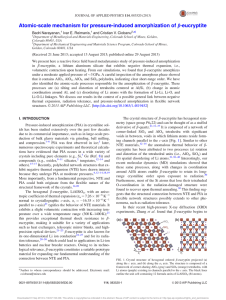Available: Feb. 6, 2008 Due: Feb. 15, 2008 1.
advertisement
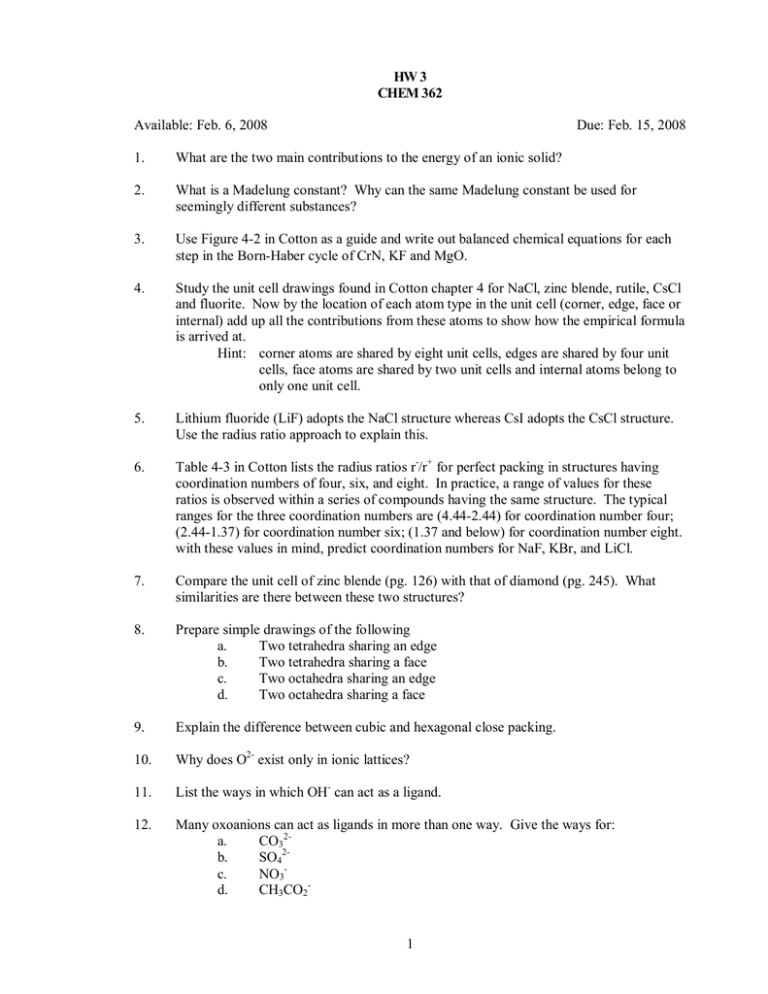
HW 3
CHEM 362
Available: Feb. 6, 2008
Due: Feb. 15, 2008
1.
What are the two main contributions to the energy of an ionic solid?
2.
What is a Madelung constant? Why can the same Madelung constant be used for
seemingly different substances?
3.
Use Figure 4-2 in Cotton as a guide and write out balanced chemical equations for each
step in the Born-Haber cycle of CrN, KF and MgO.
4.
Study the unit cell drawings found in Cotton chapter 4 for NaCl, zinc blende, rutile, CsCl
and fluorite. Now by the location of each atom type in the unit cell (corner, edge, face or
internal) add up all the contributions from these atoms to show how the empirical formula
is arrived at.
Hint: corner atoms are shared by eight unit cells, edges are shared by four unit
cells, face atoms are shared by two unit cells and internal atoms belong to
only one unit cell.
5.
Lithium fluoride (LiF) adopts the NaCl structure whereas CsI adopts the CsCl structure.
Use the radius ratio approach to explain this.
6.
Table 4-3 in Cotton lists the radius ratios r-/r+ for perfect packing in structures having
coordination numbers of four, six, and eight. In practice, a range of values for these
ratios is observed within a series of compounds having the same structure. The typical
ranges for the three coordination numbers are (4.44-2.44) for coordination number four;
(2.44-1.37) for coordination number six; (1.37 and below) for coordination number eight.
with these values in mind, predict coordination numbers for NaF, KBr, and LiCl.
7.
Compare the unit cell of zinc blende (pg. 126) with that of diamond (pg. 245). What
similarities are there between these two structures?
8.
Prepare simple drawings of the following
a.
Two tetrahedra sharing an edge
b.
Two tetrahedra sharing a face
c.
Two octahedra sharing an edge
d.
Two octahedra sharing a face
9.
Explain the difference between cubic and hexagonal close packing.
10.
Why does O2- exist only in ionic lattices?
11.
List the ways in which OH- can act as a ligand.
12.
Many oxoanions can act as ligands in more than one way. Give the ways for:
a.
CO32b.
SO42c.
NO3d.
CH3CO2-
1
13.
How are two-dimensional silicate networks built up?
14.
What is the composition of zeolites? What are molecular sieves?
15.
What is meant by the terms isopoly and heteropoly anions?
16.
Draw Lewis structures of the halate and perhalate anions XO3- and XO4-.
17.
Titanium ethoxide (empirical formula Ti(OEt)4, where Et ≡ -CH2CH3) is actually a
tetramer {Ti(OEt)4}4. Draw a plausible structure for this molecule. Write a balanced
equation for its reaction with water.
2

